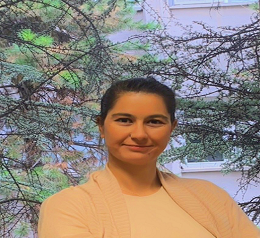Scholars International Webinar on:
Catalysis and Chemical Science
THEME: "The Role of New Technologies in the Fields of Catalysis and Chemical Science"
 24-25 Mar 2021
24-25 Mar 2021  Webinar | Virtual Meet | 11:00-17:00 GMT
Webinar | Virtual Meet | 11:00-17:00 GMT THEME: "The Role of New Technologies in the Fields of Catalysis and Chemical Science"
 24-25 Mar 2021
24-25 Mar 2021  Webinar | Virtual Meet | 11:00-17:00 GMT
Webinar | Virtual Meet | 11:00-17:00 GMT 
Hacettepe University, Turkey
Title: Monodisperse porous cerium dioxide and manganese dioxide microspheres decorated with Iridium and Palladium nanoparticles for oxidation reactions
Kadriye Özlem Hamalo?lu graduated from Hacettepe
University Chemical Engineering Department in 2007. She was awarded with
TÜB?TAK scholarship for her M.Sc. and PhD. She completed her PhD on ‘Synthesis
and catalytic applications of metal oxide based materials in particulate form’
in 2015 from the same university. She was a visiting scientist at RWTH Aachen
University, Aachen, Germany during 2011-2012. Dr. Hamalo?lu is currently
interested in the synthesis of functional materials for catalytic applications.
Noble metal nanoparticles can perform catalytic
activity without a solid support in different catalytic applications. However,
the reusability of noble metal nanoparticles is not possible due to their low
stability and low catalytic activity because of aggregation. Therefore, to keep
the active catalyst in the dispersed state in the reaction medium and to remove
the catalyst from the reaction medium easily and reuse the catalyst, immobilization
of noble nanoparticles on porous supports with high surface areas can be used.
In this purpose, different monodisperse mesoporous microspheres like silicon
dioxide, titanium dioxide, cerium dioxide and manganese dioxide were
synthesized and has been used as catalyst supports, due to their porous
structures and high surface areas, for the immobilization of different noble metal
nanoparticles in our group.
Methacrylate based monodisperse-polymeric microspheres
were used as templates, which controls the morphological property such as porous
properties, particle shape and size, for the synthesis of monodisperse- porous
microspheres by a multi-stage sol-gel templating method. The template is
removed from the composite structure after formation of composite microspheres
containing both inorganic and organic matrices. Nobel metal nanoparticles (i.e.
palladium and iridium) were synthesized by reducing of the salts of noble
metals. The nanoparticles were then immobilized on microspheres via different
organic ligands. The obtained catalysts have demonstrated desirable catalytic
properties across the oxidation reactions. Palladium and iridium nanoparticle
decorated-monodisperse-porous cerium dioxide and manganese dioxide microspheres
were tried as an efficient catalyst for benzyl alcohol oxidation and water
oxidation reactions, respectively.